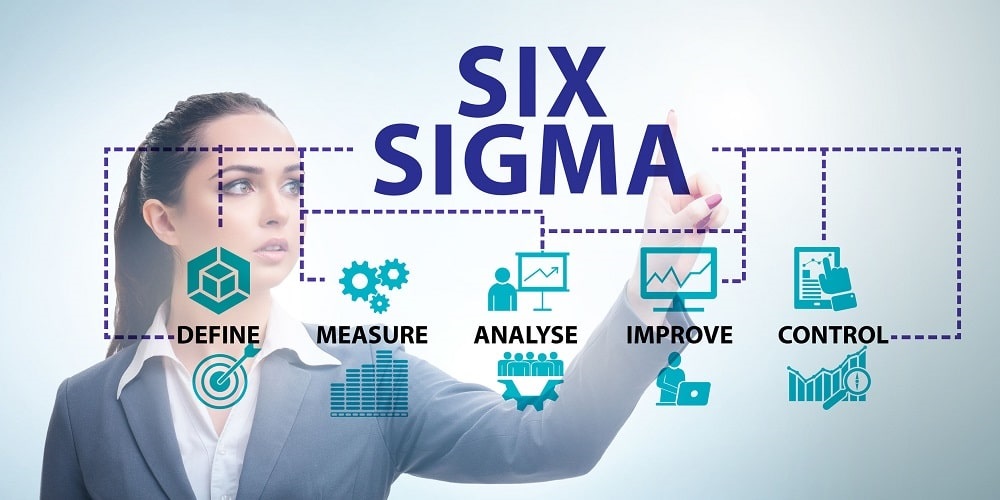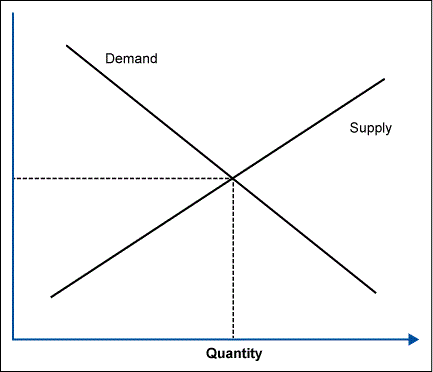
The DMAIC roadmap is extremely versatile. It has been used to improve performances in companies in virtually every industry and in every department within those companies. From manufacturing and maintenance to marketing and human resources, DMAIC (Define, Measure, Analyze, Improve, Control) is a proven discipline for improving processes. However, the Six Sigma DMAIC roadmap also can help in a company’s effort to establish a strategic plan for its business.
Developing a strategy is critical for establishing business direction. A great deal of work goes into developing strategy and it is regularly reviewed by the company executives. The DMAIC roadmap can help executives establish a disciplined process for creating and executing these strategies.
The Define Phase
The Define stage sets the blueprint for the strategy. Executives define the current status of the company and how it is presently operating as well as the current market or economic situation.
Externally, the voice of the customer needs to be confirmed. Political, economic, social and technical trends (sometimes referred to as PEST analysis) are recognized and the strength and weaknesses of the competition are established. Using tools such as the Kano analysis (Figure 1), critical-to-quality and critical-to-satisfaction trees, Big Y’s (outcomes) for the organization are established then translated into critical performance measures (including critical customer requirements).
Internally, the voice of the business also is verified by creating or reviewing company vision, mission and values.

In a business improvement project, goals and target key performance indicators (KPIs) would normally be set in the define stage as part of a project charter. There is no difference when setting corporate strategy. Leadership can establish or reconfirm stretch targets for the company to move forward.
There are many business improvement and strategy tools which can be used to help define a company’s current position. SWOT (strength, weakness, opportunity, threats) analysis, roadmaps and process mapping using Michael Porter’s value chain model, the McKinsey 7-S model, or using the 4-Ps marketing mix model are only some of the tools that leadership may want to use.
The Measure Phase
A company’s performance is best measured quantitatively. As in business improvement projects, the Measure phase confirms the current baseline operation. During this stage, data is gathered to show how the company is tracking. There is a place for experience or “gut feel” when developing strategy, however, backing-up these feelings with data validates any strategic decisions made further on during the strategy development process.
Financial performance and growth internally, of customers and of competitors, are reviewed using stock market data, balance sheets, cash flow statements and return on investment. Indicators including inflation, price elasticity, currency exchange, market growth and changing market share need to be charted.

Performances in other strategic areas also need to be measured. Safety statistics, employee turnover, and continuous improvement performance are only a few of the internal, enabling Y’s that managers should consider measuring when developing strategy.
Benchmarking studies may provide useful data in this stage. Internal and competitive benchmarking helps determine how a company is performing both with business units and with competitors.
The Analyze Phase
Careful analysis of the business and the market will help leadership determine the best strategy for the company. Opportunities, threats, strengths and weaknesses, which are validated with data from the measure stage, are analyzed in detail. The data is used to help root cause investigation of gaps in performance, competitor strategy, product cycle stage and positioning, and market growth.
Leadership needs to use this step to critically analyze what is working and what is not, understanding what X’s drive the company’s results. The voice of the customer, voice of the business and voice of the economy all need to play a part. If the company is looking at international strategy, the voice of the culture (including social and political issues) also must be considered.
Strategy tools that can help in the analyze step include Michael Porter’s competitive forces model, the Boston Consulting Group matrix (Figure 3), Igor Ansoff’s product/market grid and the GE/McKinsey matrix portfolio analysis model. There are countless financial calculations that can be analyzed as well. Some of the more common include price/earning ratio, market value added, return on investment, net present value and internal rate of return.

Here is where experience and good judgment are essential – in interpreting the results. Executives need to sift through the scores of information and synthesis the results to identify where the company needs to improve.
The Improve Phase
Strategy needs to be continuously improved as customer, economic and technical factors change. After analyzing how the Y’s are affected by the company’s X’s, leaders utilize the information to either modify strategy or stay the course with the existing strategy.
Using the information from the Define, Measure and Analyze phases, it should be clear what areas of the business need to improve. Executives, using their experience and knowledge of the company, the competition and of the industry, brainstorm ideas to drive the company forward. These new strategies are consolidated and prioritized, actions are agreed on and a Champion is appointed to drive the initiatives.
It is important for executives to assess the risks involved with any new initiative. Using tools such as a risk matrix (Figure 4), financial sensitivity analysis and revenue forecasting, the leadership team needs to fully understand the impact to the organization. A marketing exercise or design of experiments may be needed before implementing a new strategy. Trialing new products, customer focus surveys or developing prototypes will help executives conduct low risk experimentation.

The improvement stage is where the details and execution tactics of a strategy needs to be put in place. Using the corporate vision, stretch targets and goals discussed from the Define phase, leadership sets realistic milestones to achieve the strategic goals. High-level KPIs are set. Business unit leaders would then use these KPIs to develop their own performance measures. Measures eventually cascade down to shop floor performance efficiency targets. Using these targets, Black Belts, Green Belts and other business improvement professionals can find Six Sigma projects which help their business unit achieve its goals.
The Control Phase
It is important to closely monitor and manage company performance against strategy. This is to ensure the company follows the path that leadership wants to take.
The adage from Dr. Genichi Taguchi, “if you can’t measure it, you can’t improve it,” applies to business strategy just as much as business improvement. Executives create a control plan for the business’s strategy during this stage. Key financial and market performances, production, or sales are closely tracked against target. Tools such as a balanced scorecard or business dashboards are ideal to summarize how strategy execution and tactics are being controlled.
Executives also should consider contingency or response plans in the Control phase. A framework for the business’ response to events such as price wars, strikes, political events, new competition or new technology need to be put in place.
Finally, the executive team needs to decide on how often they will meet as a team to review and reassess the business strategy.
DMAIC is a controlled, disciplined, step-wise model that can be used for both business improvement and for creating a well thought-out business strategy. The DMAIC roadmap provides a framework to incorporate many of the strategy and decision-making tools and models into a structured process and can help any company on the road to success.